#arthur meltzer
Text

Arthur Meltzer (1893 - 1989) - Still LIfe
24 notes
·
View notes
Text
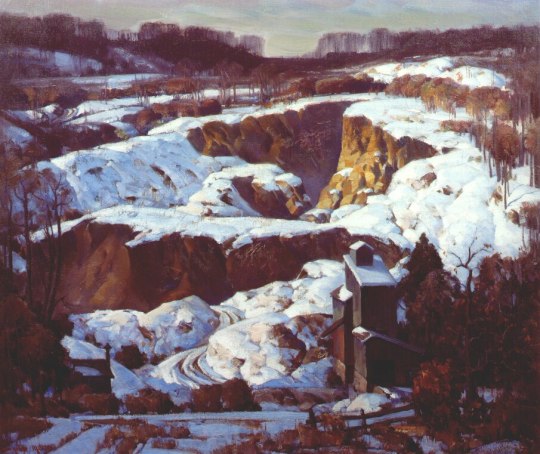
Arthur Meltzer - Quarry at Edge Hill, 1945
83 notes
·
View notes
Text

Identity Crisis
Volume: 1
Issue: 2
Chapter Two: House of Lies
Writers: Brad Meltzer
Pencils: Rags Morales
Inks: Michael Bair
Colours: Alex Sinclair
Covers: Michael Turner, Peter Steigerwald
DC
#Identity Crisis#DC#Brad Meltzer#Michael Bair#Alex Sinclair#Michael Turner#Peter Steigerwald#Rags Morales#Arthur Light#Barbara Gordon#Barry Allen#Black Canary#Black Spider#Captain Boomerang#Cheshire#Chronos#Cyborg#Deadshot#Deathstroke#Dick Grayson#Doctor Mid-Nite#Dr. Moon#Electrocutioner#Elongated Man#Green Arrow#Hal Jordan#Hawkman#Jean Loring#Kyle Rayner#Merlyn
10 notes
·
View notes
Text
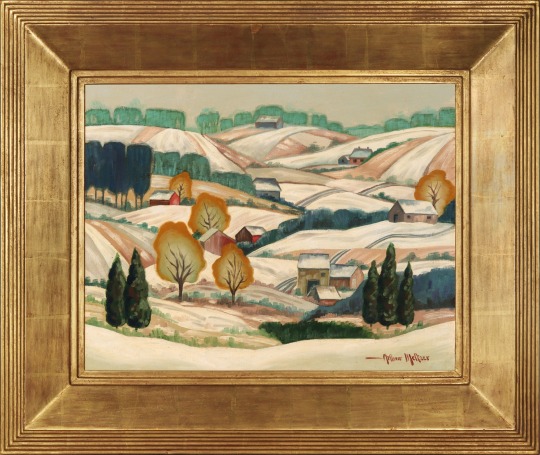
Arthur Meltzer (1893-1989)
The interesting, more Modernist, landscape is signed lower right by Arthur Meltzer, the Pennsylvania artist best known for impressionist landscapes of rural Pennsylvania.
Oil on board
Soulis Auctions
9 notes
·
View notes
Text
Estate Sale Haul!
tagging my book buddies @televinita @simplyshelbs16xoxo and @loubuttons
the woman who owned the house was apparently a bit of a hoarder, but the people running the sale said that a lot of stuff had already been sold, so what I saw was no more cluttered than most estate sales. but this woman’s book collection was insane! books in every room of the house (though granted, it wasn’t a huge house).
most prominent genres were mystery, true crime, history, and cats. this is what I went home with:





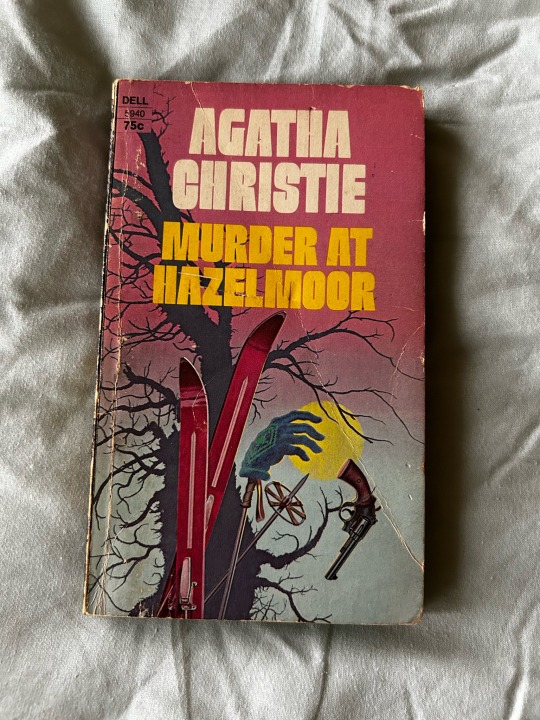
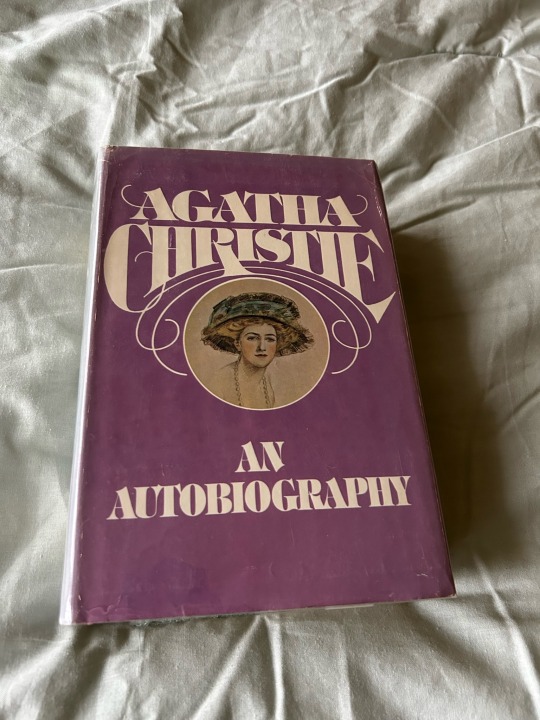
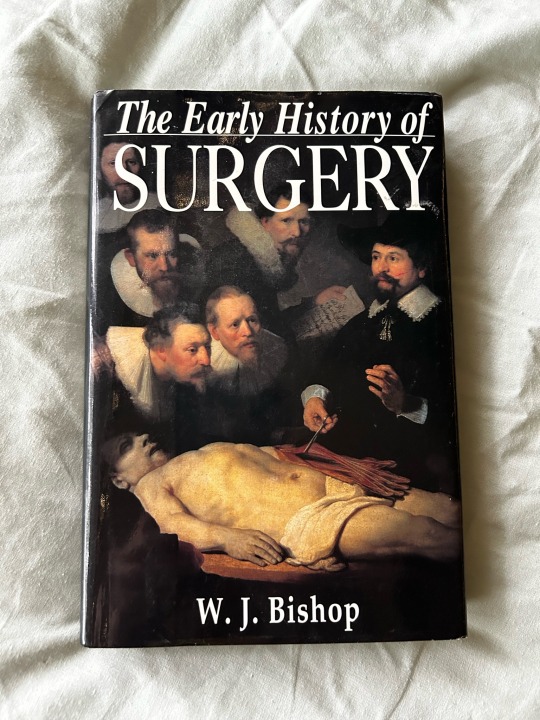

1. Unsolved Mysteries of American History (Paul Aron)
2. The Cases That Haunt Us (John Douglas and Mark Olshaker)
3. History Decoded: The 10 Greatest Conspiracies of All Time (Brad Meltzer)
4. The Crimes of Charlotte Brontë (James Tully) - this one is apparently written by a criminologist and is a fictionalized account of the ~mysteries~ surrounding the Brontë sisters. extremely mixed reviews on Goodreads, but I’m willing to give it a shot!
5. The Ultimate Encyclopedia of Mythology (Arthur Cotterell and Rachel Storm) - there were two different copies of this one, in different rooms
6. Murder at Hazelmoor (Agatha Christie) - there were actually a lot of Christies at the sale, but in an attempt at self-control (ha!), I limited myself to this one and the next:
7. Agatha Christie: An Autobiography - there were also two copies of this one
8. The Early History of Surgery (W.J. Bishop) - as a fan of the Sawbones podcast, I couldn’t pass this one up
9. A Clutch of Vampires (Raymond T. McNally) - a nonfiction account of vampire folklore throughout different cultures in history. unfortunately, the cover is pretty significantly torn, but I’m currently weighing it down with all the other books in an attempt to flatten it so I can tape it later
and finally…

10. The Ghouls (edited by Peter Haining) - published in 1974, this is a collection of horror stories by famous authors such as Edgar Allan Poe, Ray Bradbury, and Bram Stoker. but what really caught my eye was the fact that a) the introduction is by Vincent Price, b) the afterword is by Christopher Lee, and c) it is dedicated to Boris Karloff. as my brother said when I showed it to him, “the gang’s all here!”
all in all, great haul! I’m tempted to go back, but there’s also a library book sale coming up on a week, so I don’t wanna overdo it lol
total cost (including a sweater my mom picked out and a tiny Santa figurine): $15!
12 notes
·
View notes
Text

Bibliography
Emily Achtenberg, “Community Organizing and Rebellion: Neighborhood Councils in El Alto, Bolivia,” Progressive Planning, No.172, Summer 2007.
Ackelsberg, Martha A., Free Women of Spain: Anarchism and the Struggle for the Emancipation of Women, Bloomington, IN: Indiana University Press, 1991.
William M. Adams and David M. Anderson, “Irrigation Before Development: Indigenous and Induced Change in Agricultural Water Management in East Africa,” African Affairs, 1998.
AFL-CIO “Facts About Worker Safety and Health 2007.” www.aflcio.org [viewed January 19, 2008]
Gemma Aguilar, “Els Okupes Fan la Feina que Oblida el Districte,” Avui, Saturday, December 15, 2007.
Michael Albert, Parecon: Life After Capitalism, New York: Verso, 2003
Michael Albert, “Argentine Self Management,” ZNet, November 3, 2005.
Anyonymous, “Longo Maï,” Buiten de Orde, Summer 2008.
Anonymous, “Pirate Utopias,” Do or Die, No. 8, 1999.
Anonymous, “The ‘Oka Crisis’ ” Decentralized publication and distribution, no date or other publishing information included.
Anonymous, “You Cannot Kill Us, We Are Already Dead.” Algeria’s Ongoing Popular Uprising, St. Louis: One Thousand Emotions, 2006.
Stephen Arthur, “‘Where License Reigns With All Impunity:’ An Anarchist Study of the Rotinonshón:ni Polity,” Northeastern Anarchist, No.12, Winter 2007. nefac.net
Paul Avrich, The Russian Anarchists, Oakland: AK Press, 2005.
Paul Avrich, The Modern School Movement: Anarchism and Education in the United States, Oakland: AK Press, 2005.
Roland H. Bainton, “Thomas Müntzer, Revolutionary Firebrand of the Reformation.” The Sixteenth Century Journal 13.2 (1982): 3–16
Jan Martin Bang, Ecovillages: A Practical Guide to Sustainable Communities. Edinburgh: Floris Books, 2005.
Harold Barclay, People Without Government: An Anthropology of Anarchy, London: Kahn and Averill, 1982.
David Barstow, “U.S. Rarely Seeks Charges for Deaths in Workplace,” New York Times, December 22, 2003.
Eliezer Ben-Rafael, Crisis and Transformation: The Kibbutz at Century’s End, Albany: State University of New York Press, 1997.
Jamie Bissonette, When the Prisoners Ran Walpole: A True Story in the Movement for Prison Abolition, Cambridge: South End Press, 2008.
Christopher Boehm, “Egalitarian Behavior and Reverse Dominance Hierarchy,” Current Anthropology, Vol. 34, No. 3, June 1993.
Dmitri M. Bondarenko and Andrey V. Korotayev, Civilizational Models of Politogenesis, Moscow: Russian Academy of Sciences, 2000.
Franz Borkenau, The Spanish Cockpit, London: Faber and Faber, 1937.
Thomas A. Brady, Jr. & H.C. Erik Midelfort, The Revolution of 1525: The German Peasants’ War From a New Perspective. Baltimore: The Johns Hopkins University Press, 1981.
Jeremy Brecher, Strike! Revised Edition. Boston: South End Press, 1997.
Stuart Christie, We, the Anarchists! A study of the Iberian Anarchist Federation (FAI) 1927–1937, Hastings, UK: The Meltzer Press, 2000.
CIPO-RFM website, “Our Story,” www.nodo50.org [viewed November 6, 2006]
Eddie Conlon, The Spanish Civil War: Anarchism in Action, Workers’ Solidarity Movement of Ireland, 2nd edition, 1993.
CrimethInc., “The Really Really Free Market: Instituting the Gift Economy,” Rolling Thunder, No. 4, Spring 2007.
The Curious George Brigade, Anarchy In the Age of Dinosaurs, CrimethInc. 2003.
Diana Denham and C.A.S.A. Collective (eds.), Teaching Rebellion: Stories from the Grassroots Mobilization in Oaxaca, Oakland: PM Press, 2008.
Robert K. Dentan, The Semai: A Nonviolent People of Malaya. New York: Holt, Rinehart and Winston, 1979.
Jared Diamond, Collapse: How Societies Choose to Fail or Succeed, New York, Viking, 2005.
Dissent! Network “The VAAAG: A Collective Experience of Self-Organization,” www.daysofdissent.org.uk [viewed January 26, 2007]
Sam Dolgoff, The Anarchist Collectives, New York: Free Life Editions, 1974.
George R. Edison, MD, “The Drug Laws: Are They Effective and Safe?” The Journal of the American Medial Association. Vol. 239 No.24, June 16, 1978.
Martyn Everett, War and Revolution: The Hungarian Anarchist Movement in World War I and the Budapest Commune (1919), London: Kate Sharpley Library, 2006.
Patrick Fleuret, “The Social Organization of Water Control in the Taita Hills, Kenya,” American Ethnologist, Vol. 12, 1985.
Heather C. Flores, Food Not Lawns: How To Turn Your Yard Into A Garden And Your Neighborhood Into A Community, Chelsea Green, 2006.
The Freecycle Network, “About Freecycle,” www.freecycle.org [viewed January 19 2008].
Peter Gelderloos, Consensus: A New Handbook for Grassroots Social, Political, and Environmental Groups, Tucson: See Sharp Press, 2006.
Peter Gelderloos and Patrick Lincoln, World Behind Bars: The Expansion of the American Prison Sell, Harrisonburg, Virginia: Signalfire Press, 2005.
Malcolm Gladwell, The Tipping Point: How Little Things Can Make a Big Difference. New York: Little, Brown, and Company, 2002.
Amy Goodman, “Louisiana Official: Federal Gov’t Abandoned New Orleans,” Democracy Now!, September 7, 2005.
Amy Goodman, “Lakota Indians Declare Sovereignty from US Government,” Democracy Now!, December 26, 2007.
Natasha Gordon and Paul Chatterton, Taking Back Control: A Journey through Argentina’s Popular Uprising, Leeds (UK): University of Leeds, 2004.
Uri Gordon, Anarchy Alive! Anti-authoritarian Politics from Practice to Theory, London: Pluto Press, 2008.
David Graeber, Fragments of an Anarchist Anthropology, Chicago: Prickly Paradigm Press, 2004.
David Graeber, “The Shock of Victory,” Rolling Thunder no. 5, Spring 2008.
Evan Henshaw-Plath, “The People’s Assemblies in Argentina,” ZNet, March 8, 2002.
Neille Ilel, “A Healthy Dose of Anarchy: After Katrina, nontraditional, decentralized relief steps in where big government and big charity failed,” Reason Magazine, December 2006.
Inter-Press Service, “Cuba: Rise of Urban Agriculture,” February 13, 2005.
Interview with Marcello, “Criticisms of the MST,” February 17, 2009, Barcelona.
Derrick Jensen, A Language Older Than Words, White River Junction, Vermont: Chelsea Green Publishing Company, 2000.
John Jordan and Jennifer Whitney, Que Se Vayan Todos: Argentina’s Popular Rebellion, Montreal: Kersplebedeb, 2003.
Michael J. Jordan, “Sex Charges haunt UN forces,” Christian Science Monitor, November 26, 2004.
George Katsiaficas, The Subversion of Politics: European Autonomous Social Movements and the Decolonization of Everyday Life. Oakland: AK Press, 2006.
George Katsiaficas, “Comparing the Paris Commune and the Kwangju Uprising,” www.eroseffect.com [viewed May 8, 2008]
Lawrence H. Keeley, War Before Civilization. Oxford: Oxford University Press, 1996.
Roger M. Keesing, Andrew J. Strathern, Cultural Anthropology: A Contemporary Perspective, 3rd Edition, New York: Harcourt Brace & Company, 1998.
Graham Kemp and Douglas P. Fry (eds.), Keeping the Peace: Conflict Resolution and Peaceful Societies around the World, New York: Routledge, 2004.
Elli King, ed., Listen: The Story of the People at Taku Wakan Tipi and the Reroute of Highway 55, or, The Minnehaha Free State, Tucson, AZ: Feral Press, 1996.
Aaron Kinney, “Hurricane Horror Stories,” Salon.com October 24, 2005.
Peter Kropotkin, Fields, Factories and Workshops Tomorrow, London: Freedom Press, 1974.
Wolfi Landstreicher, “Autonomous Self-Organization and Anarchist Intervention,” Anarchy: a Journal of Desire Armed. No. 58 (Fall/Winter 2004–5), p. 56
Gaston Leval, Collectives in the Spanish Revolution, London: Freedom Press, 1975 (translated from the French by Vernon Richards).
A.W. MacLeod, Recidivism: a Deficiency Disease, Philadelphia: University of Pennsylvania Press, 1965.
Alan MacSimoin, “The Korean Anarchist Movement,” a talk in Dublin, September 1991.
Sam Mbah and I.E. Igariway, African Anarchism: The History of a Movement, Tucson: See Sharp Press, 1997.
The Middle East Media Research Institute, “Algerian Berber Dissidents Promote Programs for Secularism and Democracy in Algeria,” Special Dispatch Series No. 1308, October 6, 2006, memri.org
George Mikes, The Hungarian Revolution, London: Andre Deutsch, 1957.
Cahal Milmo, “On the Barricades: Trouble in a Hippie Paradise,” The Independent, May 31, 2007.
Bonnie Anna Nardi, “Modes of Explanation in Anthropological Population Theory: Biological Determinism vs. Self-Regulation in Studies of Population Growth in Third World Countries,” American Anthropologist, vol. 83, 1981.
Nathaniel C. Nash, “Oil Companies Face Boycott Over Sinking of Rig,” The New York Times, June 17, 1995.
Oscar Olivera, Cochabamba! Water Rebellion in Bolivia, Cambridge: South End Press, 2004.
George Orwell, Homage to Catalonia, London: Martin Secker & Warburg Ltd., 1938.
Oxfam America, “Havana’s Green Revelation,” www.oxfamamerica.org [viewed December 5, 2005]
Philly’s Pissed, www.phillyspissed.net [viewed May 20, 2008]
Daryl M. Plunk, “South Korea’s Kwangju Incident Revisited,” The Heritage Foundation, No. 35, September 16, 1985.
Rappaport, R.A. (1968), Pigs for the Ancestors: Ritual in the Ecology of a New Guinea People. New Haven: Yale University Press.
RARA, Revolutionaire Anti-Racistische Actie Communiqués van 1990–1993. Gent: 2004.
Revolutionary Association of Women of Afghanistan “About RAWA,” www.rawa.org Viewed June 22, 2007
James C. Scott, Seeing Like a State: How Certain Schemes to Improve the Human Condition Have Failed, New Haven: Yale University Press, 1998.
James C. Scott, “Civilizations Can’t Climb Hills: A Political History of Statelessness in Southeast Asia,” lecture at Brown University, Providence, Rhode Island, February 2, 2005.
Jaime Semprun, Apología por la Insurrección Argelina, Bilbao: Muturreko Burutazioak, 2002 (translated from French to Spanish by Javier Rodriguez Hidalgo).
Nirmal Sengupta, Managing Common Property: Irrigation in India and The Philippines, New Delhi: Sage, 1991.
Carmen Sirianni, “Workers Control in the Era of World War I: A Comparative Analysis of the European Experience,” Theory and Society, Vol. 9, 1980.
Alexandre Skirda, Nestor Makhno, Anarchy’s Cossack: The Struggle for Free Soviets in the Ukraine 1917–1921, London: AK Press, 2005.
Eric Alden Smith, Mark Wishnie, “Conservation and Subsistence in Small-Scale Societies,” Annual Review of Anthropology, Vol. 29, 2000, pp. 493–524.
“Solidarity with the Communities of CIPO-RFM in Oaxaca,” Presentation at the Montreal Anarchist Bookfair, Montreal, May 21, 2006.
Georges Sossenko, “Return to the Spanish Civil War,” Presentation at the Montreal Anarchist Bookfair, Montreal, May 21, 2006.
Jac Smit, Annu Ratta and Joe Nasr, Urban Agriculture: Food, Jobs and Sustainable Cities, UNDP, Habitat II Series, 1996.
Melford E. Spiro, Kibbutz: Venture in Utopia, New York: Schocken Books, 1963.
“The Stonehenge Free Festivals, 1972–1985.” www.ukrockfestivals.com [viewed May 8, 2008].
Dennis Sullivan and Larry Tifft, Restorative Justice: Healing the Foundations of Our Everyday Lives, Monsey, NY: Willow Tree Press, 2001.
Joy Thacker, Whiteway Colony: The Social History of a Tolstoyan Community, Whiteway, 1993.
Colin Turnbull, The Mbuti Pygmies: Change and Adaptation. Philadelphia: Harcourt Brace College Publishers, 1983.
Marcele Valente, “The Rise and Fall of the Great Bartering Network in Argentina.” Inter-Press Service, November 6, 2002.
Judith Van Allen “‘Sitting On a Man’: Colonialism and the Lost Political Institutions of Igbo Women.” Canadian Journal of African Studies. Vol. ii, 1972. 211–219.
Johan M.G. van der Dennen, “Ritualized ‘Primitive’ Warfare and Rituals in War: Phenocopy, Homology, or...?” rechten.eldoc.ub.rug.nl
H. Van Der Linden, “Een nieuwe overheidsinstelling: het waterschap circa 1100–1400” in D.P. Blok, Algemene Geschiednis der Nederlanden, deel III. Haarlem: Fibula van Dishoeck, 1982, pp. 60–76
Wikipedia, “Asamblea Popular de los Pueblos de Oaxaca,” en.wikipedia.org /wiki/APPO [viewed November 6, 2006]
Wikipedia, “The Freecycle Network,” en.wikipedia.org [viewed January 19, 2008]
Wikipedia, “Gwangju massacre,” en.wikipedia.org [viewed November 3, 2006]
Wikipedia, “The Iroquois League,” en.wikipedia.org [viewed June 22, 2007]
William Foote Whyte and Kathleen King Whyte, Making Mondragon: The Growth and Dynamics of the Worker Cooperative Complex, Ithaca, New York: ILR Press, 1988.
Kristian Williams, Our Enemies in Blue. Brooklyn: Soft Skull Press, 2004.
Peter Lamborn Wilson, Pirate Utopias, Brooklyn: Autonomedia, 2003.
Daria Zelenova, “Anti-Eviction Struggle of the Squatters Communities in Contemporary South Africa,” paper presented at the conference “Hierarchy and Power in the History of Civilizations,” at the Russian Academy of Sciences, Moscow, June 2009.
Howard Zinn, A People’s History of the United States. New York: Perrenial Classics Edition, 1999.
#recommended reading#reading list#book list#book recs#organization#revolution#anarchism#daily posts#communism#anti capitalist#anti capitalism#late stage capitalism#anarchy#anarchists#libraries#leftism#social issues#economy#economics#climate change#anarchy works#environmentalism#environment#solarpunk#anti colonialism#acab
4 notes
·
View notes
Text
How To Fix The Justice League
It’s been almost 17 years and no JLA roster has managed to reach the critical and financial success of the 1997 JLA run kicked off by Grant Morrison and followed up by Waid and Kelly (unless you’re a fan of Meltzer’s run). No JLA title has managed to run as long as ‘Justice League of America’ Vol 1 (1960-1987 with 261 issues) and no JL adaptation, be it animation or live action has managed to match the long lasting success of the 2001 Justice League cartoon that later morphed into Justice League Unlimited.
In fact, the League has been in a flux long enough for someone to have been born and gotten their drivers license. You could argue the last 10 years hasn’t been good for any of DC’s team books but JL has had it especially bad.
The problems are self evident, the JL is a team compromised of the world’s greatest heroes, most of whom have their own titles so nothing major can happen to them in the JL book and whoever is writing JL is usually beholden to the whims of whoever is writing the character’s solo title. Attempts to fill the roster with lesser known characters has rarely proven successful. There is also the matter of the scale of the threat the League faces. Once you go from planetary threats to galactic threats to universal to multiversal to omniversal threats, where do you go afterwards? After all, too many back to back existential crisis can diminish the potency of such stories.
So how do you fix the League and make it sustainable for long term? Well, here are a few suggestions as I try to build my own JL roster.
Step One: Ditch the Trinity
I’m serious, the Trinity may have been a cool concept once upon a time but the concept is now past the point of diminishing returns.
The Big 3, or really just Superman and Batman get the most books, the most media attention *and* is often the main focus of JL as well?
It doesn’t do these characters much favor either as the Trinity themselves had to be changed in order to accommodate them on the League. Batman is at his best when he is a noir/gothic inspired hero doing street level stuff but to fit on the Justice League, he had to be turned into an ubermesnch who can beat anyone and every other character has to be scaled down so he can look good. Superman who is a paragon and a boyscout in his own title often ends up either taking a back seat to everyone else so they can be useful or his story arcs revolve around the possibility of him going evil and misusing his powers. Poor Wonder Woman who is a more proactive character in her own title ends up being a more passive one on the League. She is often ‘just there’ or worse saddled with a romantic arc with either Superman or Batman. Of the three, she’s the only one I would still keep around on the League since she rarely gets her due. Despite the promise of being part of the ‘Big Three’ she rarely gets the same level of attention and love as Superman and Batman does.
For the Trinity, I suggest that they’re better off leading their own teams. .Superman can run the Authority, LoSH, Superman Squad or maybe a present day version of the Science Squad. Batman has either the Outsiders or Batman Inc that he can be in charge of. Wonder Woman can be in charge of a modern day version of the Holiday Girls or Justice League Dark.
However, while building a team, having three core characters and building the rest of the team around them is a good writing trick and imo, it’s fundamental to the League. But in this case, I will choose characters who have some commonalities with each other, so for my League, I would go with: Martian Manhunter, Aquaman and Wonder Woman as the new trinity.
Arthur and Diana are both royalty with two different approaches to situations. Arthur is usually more stern and hard headed while Diana is more diplomatic and J’onn would be the mediator. With just Diana and J’onn at the top, neither of them would have to take a backseat to either Superman or Batman and Arthur can have a more active role on the team without feeling like a glorified guest star. IMO, the relationship between these three characters is often overlooked even in the comics.
You also have the theme of earth (Diana), air (Martian Manhunter) and water (Aquaman) plus they have enemies that they can share with each other. Old school Wonder Woman comics was a kitchen sink fantasy title where it was possible for any character based on any genre could show up. It was never just limited to Greek Mythology, you had other mythologies in play as well along with aliens and Atlanteans. A character like Queen Clea could just as easily be a villain for both Diana and Arthur while the Saturnians, Queen Desira of Venus and Badra could be enemies for both Diana and Arthur as well as flesh out the different alien civilizations within the solar system.
Step 2: League Members: New, Old & Unexpected
Now that we’ve figure out the Trinity, lets fill in the rest of the ranks.
If you look at the older JL comic books, even though the Trinity were the figures heads Green Lantern and Flash often like the real heart of the book. Even though the popular characters are what draws us in, what really drove the book was the drama between Hal, Oliver, Barry, Katar and Dinah. The team needs to be a mix of old and new characters that builds on existing relationships while also having them meet new characters.
For the modern day, I would go with Wally West as the Flash. For Green Lantern I choose Sojourner ‘Jo’ Mullein. Wally’s been in several incarnations of the League already and has earned his spot. Jo has been in Far Sector and in the main GL title so now it’s time to make the leap into the main JL title. Jo would be the field leader while Wally would be second in command. Wally would be the impulsive, hot headed one who is best at improvising on the fly while Jo would be the thoughtful strategic long term planner.
To round out the cast, I would have Cyborg/Victor Stone as the teams resident engineer and tech specialist. I always thought it was a missed opportunity not to build on Vic’s Titans history and have Vic and Wally on the JL together. Especially since they have both teamed up in Wally’s own title.
Then I would add in Atom/Ryan Choi as the team’s biologist plus medic, Dr Fate/Khalid Nassour as their magical specialist and Big Barda as the team’s heavy weight. Initially I thought of including either Zatanna or Raven as the magical specialist but I think it’s time that Khalid branched out and interacted with new characters. To round out the team, I would add in Armando Ramone who was the brother of the original Vibe and Beast Boy since he has never been on the JL before.
I would set the League’s HQ in Guy Gardner’s Warriors Bar in New York. Guy and Bobo/Detective Chimp would be serving drinks at this bar. Linda Park would be there as well with Jai and Iris. Guy wouldn’t be an active member, he would be on reserve alongside Mr Miracle/Scott Free whose a stay-at-home-dad with his and Barda’s kid, who would hang out with Wally’s kids. Guy’s presence also means we can fold in Ice/Tora as his partner and co-owner of the business plus reserve member.
But I wouldn’t limit the League’s new HQ to Guy’s Warriors Bar, I would also have this be the place where Justice League Dark The Keepers of Magic would congregate as well.
For this team I would go with Zatanna as the leader (and have do some actual leading), Ray Palmer/Atom back in his Sword of Atom look as the team scientist/explorer, Detective Chimp/Bobo would still follow her on missions, then I would add in Vixen/Marie Jiwe McCabe (her powers are magic derived so it’s weirder that she has never been in JLD), then I would add in Raven, Zachary Zatara, Billy Batson/Shazam (as the understudy/proteges), Donna Troy (for the Wonder representation) and Blue Devil/David Cassidy as the team’s muscle, Aztek/Nayeli Constant who would serve as the team Brick and also opens up Aztek mythology just as Vixen’s opens up West African mythology. This would serve as the core team. Each member representing either a different aspect of the magical world or Ray’s case, a different perspective. The team will cross over and meet various characters throughout their journey like Eve Eden/Nightshade and her quest to rescue her brother or Enchantress or Ralph and Sue Dibney as ghost detectives or Dr Mist.
Then I would have Deadman/Boston Brand act as back up/support while Madame Xanadu serves as mission control like she did in Volume 1. I don’t want the book to just be about horror or rehash Books of Magic again. I want something akin to Greg Pak’s ‘Incredible Hercules’ where you had this hodgepodge of different mythologies mixing and interacting with each other.
I actually like the idea of JL and JLD having the same book with JLD as back up but I didn’t like the latter having too few pages. Still I would keep the two teams more intertwined with the Wonder Woman and Aquaman often going back and forth between JL and KoM with Zatanna often asking WW for guidance when it comes to leadership.
But for this scenario lets imagine that they are separate books with their own separate plot lines but characters can move freely from one book to the other. I would give them the JL one a back up title called JLA Reserves. The back up will spotlight characters who don’t appear in the main feature which will address the problem of readers not seeing their fave get any focus in the main feature. I’ll give a similar back up to JLD which will spotlight individual characters (setting them up before they join the team without interrupting the main story line) or stories set in the past that will flesh out members of the team or spotlight a cool magical character who is not a member of the team.
As for plots, well, for the JL I want mix of work place comedy and superhero action. The A-plot could Wonder Woman and Martian Manhunter investigating something on Mars while the B-plot could be something like the League at homebase having to contain an runaway alien microbe from Choi’s lab that’s wrecking havoc.
Or Wally and Linda go on a date to explore NY while leaving Jai and Iris in the care of Khalid and Vic but babysitting two kids with superspeed (or super punch in Jai’s case turns out to be more difficult than expected).
Or Zatanna agrees to do Guy and Ice a favor by holding one of her shows at Warriors Bar but because neither Guy nor Zatanna can stand each other or agree on how the show should go leading to disaster.
Or on JLD side where Donna attempts to put together a portfolio or enough photos to get a book deal in between regular superhero stuff. Maybe even has Zatanna and Vixen model for her. Even Blue Devil could be her muse.
Or Zachary, Raven and Billy go on their own side trip but ends up landing in more trouble than they initially realized.
But a superhero team can’t just be about sitcom hijinks, you also need:
Step 3: Villains
The problem with modern iterations of JL is the lack of an iconic rogues gallery for them. Historically the League has fought White Martians, Starro the Conqueror, the Royal Flush Gang, Felix Faust, Vandal Savage, Lex Luthor and the Injustice League.
But the Leagues needs villains that are unique to them. Villains like Luthor & The Injusitce League often makes the League feel more like an extension of the Superman mythos whilst aliens like the White Martians and Starro end up being the faceless horde most of the time.
For this iteration of the League, I think it’s important to utilize villains who are connected to the heroes. Especially villains whom the heroes have in common and could lead to more world building and mythology.
Like Queen Clea for instance is a WW villain, she was the ruler of Atlantis in the original Martson run. However she could be a shared enemy of both WW and Aquaman and her kingdom could just be one of the many Atlantean colonies.
There is also Queen Desira who is the queen of Venus and the slave culture of Saturn lead by Eviless (who would need a name change) from old WW comics. Exploring these cultures and how they might connect to the Martians from J’onn’s comics. Ryan Choi also dated Giganta (another WW villains) so there is opportunity for hilarity here.
For the ‘Keepers of Magic’ Madame Xanadu has Morgan Le Fay, Donna has the Dark Angel, Raven has Trigon, Vixen has Mustapha Maksai and the Orisha’s, Raven has Trigon and Zatanna has a few enemies that should be dusted off especially Allura. I think that’s enough villainous fire power to challenge the League.
I left out Dick Grayson/Nightwing because Dick has joined an lead the League before and I didn’t want to include too many Titans characters or create the false impression the Titans are JL Jr who are meant to ‘graduate’ to the League. If you look at their enemies, the Titans ones are just as dangerous as any JL enemy. Dick should be with the Titans (I like the Titans Academy as a concept if not the execution) along with Roy Harper or he has to lead a team he’s never lead before like the Suicide Squad or Gen 13.
Anyway, let me know what you think.
TL;Dr: Make Wonder Woman, Martian Manhutner and Aquaman the new Trinity. Wally West, Jo Mullein, Cyborg, Ryan Choi, Beast Boy, Dr Fate, Vibe and Big Barda fill out the roster. They’re all set up in Guy Gardner’s Warriors bar where Guy, Detective Chimp, Ice, Scott Free and Linda Park also hang. The JLD operate from there as well, but now they are rebranded as ‘Keepers of Magic’, with Zatanna, Vixen, Donna Troy, Blue Devil, Aztek being in charge along with Zachary Zatara, Raven and Billy Batson.
#justice league#wonder woman#aquaman#martian manhunter#diana of themyscira#Wally West#cyborg#Dr Fate#linda park#jo mullein#khalid nassour#ryan choi#big barda#mr miracle#Zatanna Zatara#marie jiwe mccabe#raven#zachary zatara#billy batson#Donna Troy#aztek#detective chimp#beast boy#guy gardner#green lantern#vibe
71 notes
·
View notes
Link
Check out this listing I just added to my Poshmark closet: Heroes for My Son Hardcover Brad Meltzer Book.
0 notes
Photo

Cockle and Conch - Arthur Meltzer
American, 1893-1989
Oil on board , 19 7/8 x 22 1/2 in. 50.5 x 57.1 cm.
324 notes
·
View notes
Text
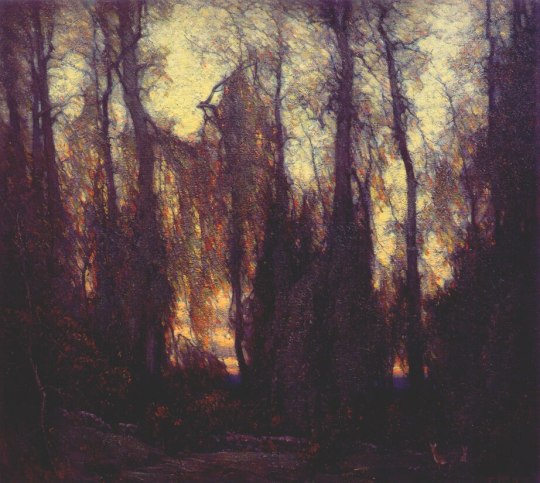
Arthur Meltzer - Woodland Mansions
6 notes
·
View notes
Text

Identity Crisis
Volume: 1
Issue: 6
Chapter Six: Husbands & Wives
Writers: Brad Meltzer
Pencils: Rags Morales
Inks: Michael Bair
Colours: Alex Sinclair
Covers: Michael Turner, Peter Steigerwald
DC
#Identity Crisis#Brad Meltzer#Rags Morales#Michael Bair#Alex Sinclair#Michael Turner#Peter Steigerwald#DC#Alfred Pennyworth#Aquababy#Aquaman#Arthur Light#Barry Allen#Batman#Black Canary#Calculator#Captain Boomerang#Captain Cold#Cheshire#Chronos#Connor Hawke#Deadshot#Deathstroke#Despero#Dick Grayson#Doctor Mid-Nite#Electrocutioner#Elongated Man#Firestorm#Geo-Force
0 notes
Photo

Artist: Arthur Meltzer (1893 - 1989)
355 notes
·
View notes
Photo
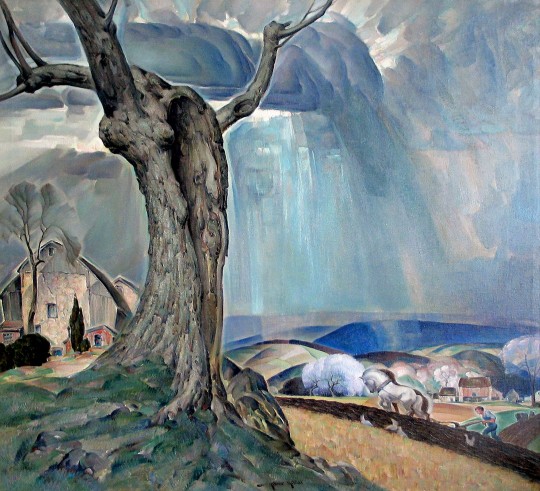
Arthur Meltzer (American 1893-1989), Rain: Spring, Oil on canvas
129 notes
·
View notes
Text
November 2021 Wrap-Up
Books read, in rough order of personal worth-it-ness:
A Marvellous Light - Freya Marske (Two Edwardian gentlemen, an unexpected curse, a magical mystery, and a horrible house party.)
- 🏳️🌈, BIPOC secondary characters
Light from Uncommon Stars - Ryka Aoki (A violin prodigy, her teacher, and an actual illegal alien all find healing through music, food and love, while a deal with the Devil looms.)
- 🏳️🌈, BIPOC, #ownvoices
A Journal of the Plague Year - Daniel Defoe (A fictional account of the 1665 bubonic plague epidemic in London. The more things change….)
When Sorrows Come - Seanan McGuire (Toby’s finally getting married, unless politics gets in the way.)
- 🏳️🌈 side characters, 🏳️🌈 author
Something Wicked This Way Comes - Ray Bradbury (Two boys encounter a dangerous carnival.)
A Slip of the Keyboard - Terry Pratchett (Sundry essays, speeches, and writings.)
The Flowers of Vashnoi - Lois McMaster Bujold (An attempt to rehabilitate radioactive land leads to a distressing discovery.)
Babylon's Ashes - James S.A. Corey (The attempted destruction of Earth has only lead to more conflict, as the Free Army begins to fracture.)
- 🏳️🌈 and BIPOC characters
No Gods, No Monsters - Cadwell Turnbull (A fresh take on ‘the world discovers monsters’, with secret societies in the wings, and a lot of human denial.)
- 🏳️🌈, BIPOC, #ownvoices
The Matzah Ball - Jean Meltzer (Rachel’s publisher wants a Hanukkah romance when Christmas is much more romantic. Then Rachel learns her summer camp nemesis is throwing the Hanukkah party of the century.)
- Jewish characters, characters with disabilities, #ownvoices
DNF
The All-Consuming World - Cassandra Khaw (The remnants of a space outlaw crew search for answers to their failed final job, and encounter malicious AI.)
- 🏳️🌈, #ownvoices
Currently Reading
More Bad Days in History - Michael Farquhar (365 interesting and amusing occurances.)
The Penguin Complete Sherlock Holmes - Arthur Conan Doyle (Victorian detective stories)
- major disabled character
Stats
Monthly total:
10
Yearly total: 148 + 3
Queer books:
4
#ownvoices POC books: 2
Canadian authors: 0
Read any of these? Interested in them? I’m happy to talk about my thoughts further!
January February March April May June July August September October
28 notes
·
View notes
Text

ARTHUR MELTZER (AMERICAN 1893-1989)
"SCRIBES OF OLD"
Signed 'Arthur Meltzer' bottom center right; also inscribed with title on label verso, oil on canvas
Freeman’s
8 notes
·
View notes
